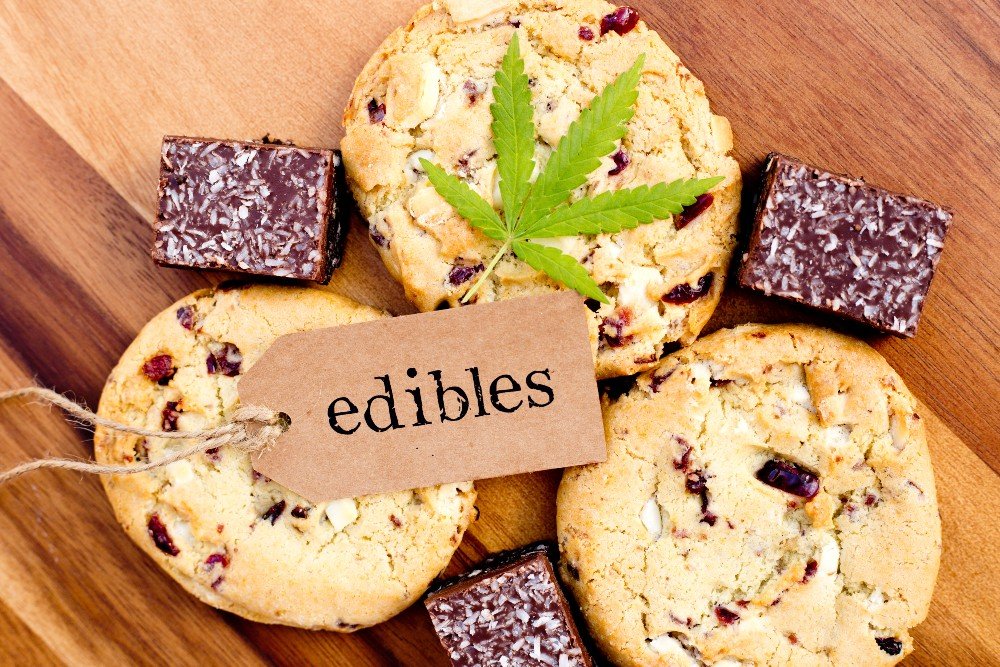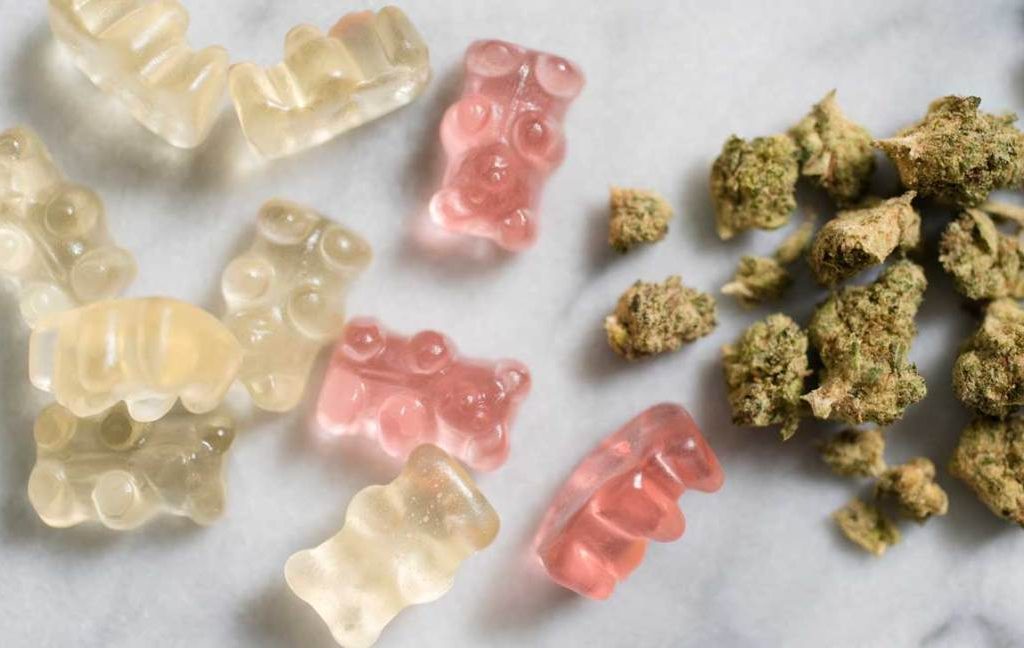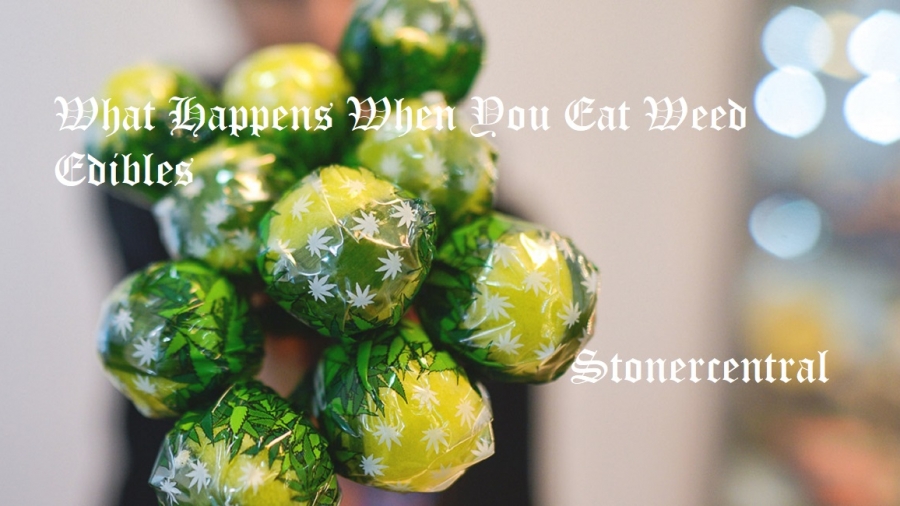Edibles are cannabis-based food products. They come in many different forms, from gummies to brownies, and contain either one or both of marijuana’s active ingredients: THC (delta-9-tetrahydrocannabinol) and CBD (cannabidiol).

With the legalization of marijuana, edibles are increasing in popularity. CBD-only edibles have even been found to help treat ailments such as anxiety and chronic pain. As an added benefit, edibles don’t pose risks to the respiratory system — unlike smoking marijuana.
The edible experience tends to differ from that of other cannabis products. The “high” from edibles can feel more intense, and it may last longer than the high you get from smoking.
Edibles also take longer than smoking or vaping cannabis to kick in, although many factors affect the timing.
As recreational marijuana continues to become legal in more states, people are raising more questions about the effects of the drug on overall health. Smoking marijuana is one thing, but what about edibles—or consuming the drug in foods like brownies, gummies, muffins, doughnuts and even peanut butter? Here’s what you need to know about how cannabis impacts your body when you consume it in food.
The active ingredient in edibles is called tetrahydrocannabinol, known as THC, says Andrew Stolbach, M.D., M.P.H., an emergency physician and medical toxicologist at The Johns Hopkins Hospital in Baltimore. Shortly after eating a food containing THC, you begin to absorb it in your bloodstream, he says. But there’s a catch: Absorption can be delayed, depending on how much of that edible you consumed and how much other food is in your stomach. That can be a big problem, says Stolbach, because people may not realize how much they’ve consumed until they begin to feel sick.

“Something that’s important to remember about edibles is that absorption is unpredictable,” says Stolbach. “People don’t experience peak effect for a while after eating, [which can be] minutes to hours—but usually hours.”
Just like food or medications, THC consumed via edibles is absorbed through the walls of your intestines. The more food that’s in your system—say, you ate a weed brownie as dessert following a big dinner out—the longer it will take for the THC to get absorbed. This is where edibles are majorly different from a joint: When you smoke THC, it immediately goes into your bloodstream, whereas you might not feel the full effect of THC you’ve consumed until hours later, says Stolbach.
While a desirable effect of THC is to feel more relaxed, says Stolbach, things can quickly take a turn for the worse if you accidentally overindulge. “Common overdose symptoms might be feelings of panic, a fast heart rate and anxiety,” he says. “These reactions can become really severe.”
Say that brownie tasted fantastic and you went back for seconds or thirds—at this point, excess calories and sugar are the least of your concerns. If that brownie was laced with a high dose of THC, you could be feeling these scary overdose effects for as long as 12 hours, says Stolbach.
The type of edible you consume can impact how your body reacts to it. THC is fat-soluble, meaning it dissolves in fats to be absorbed in your intestines. That’s why many edibles are dessert foods, such as brownies or cookies, because they’re made with THC-infused fats. “The thing that makes me nervous about [THC] dissolved in butter is that if the solution is unequally [mixed], some parts of your brownie or cookie will have a lot more THC than other parts,” says Stolbach.
Some states require edibles to be labeled with the amount of THC per serving—such as individually wrapped packs of gummies. However, many bakeries and facilities producing edibles may not be tightly regulated when it comes to how much THC is in each serving of that product. And even if they are labeled, just as with supplements, you can’t always trust the numbers in the absence of strict regulation. Consumers should do their homework to ensure the source of any edible they’re consuming is credible, as well as be mindful of where it’s coming from.
Manufacturers are now making everything from protein powders to chocolate bars to granola bites laced with THC, making it possible to consume edibles while sticking to a healthy diet. If you do want to give edibles a try, start small with low doses, make sure they’re coming from a package that clearly labels the THC concentration, and consume them at a time when you won’t need to be operating a vehicle for a few hours, says Stolbach. “Give it some time to see how your body handles it,” he says. “Try to minimize your stimulus and relax.”
That said, Stolbach doesn’t recommend edibles as a health food. He says he hasn’t seen proof that they make you healthier or treat a disease better than other medications out there—and he has great concern over edibles getting in the wrong hands. Often, edibles can be packaged to look like regular candy or treats, enticing children. The most commonly reported exposure to cannabis in children under age 12 is through baked goods and candies, according to the American College of Medical Toxicology, and ingestion can cause severe detrimental effects. If you are keeping edibles in your home and have children, ensure they’re contained in child-resistant packaging and kept somewhere out of reach.
How long does it take before you begin to feel the effects of edibles?
Edibles typically take around 30 to 60 minutesTrusted Source to kick in. However, onset time depends on a lot of factors.
First, it depends on the product’s active ingredients. If the product contains a high dose or concentration of THC, it could take effect faster.
Keep in mind that CBD-only edibles are not psychoactive. They don’t cause the “high” typically associated with THC-infused edibles. As a result, it may be harder to identify when CBD products have taken effect.
For both types of products, onset time also depends on where in the body the edibles are being broken down and absorbed into the bloodstream.

I remember the first time I took an edible I was saying “man this ain’t shit” so I went to take another bite and as I was taking the bite of the brownie it all kicked in and I couldn’t stop moving even if I tried. I kept on bouncing like I was stuck in a box, when I would close my eyes I would picture myself as the dvd thing bouncing off the sides of the tv screen, except I was the dvd thing… very trippy, but fun time.